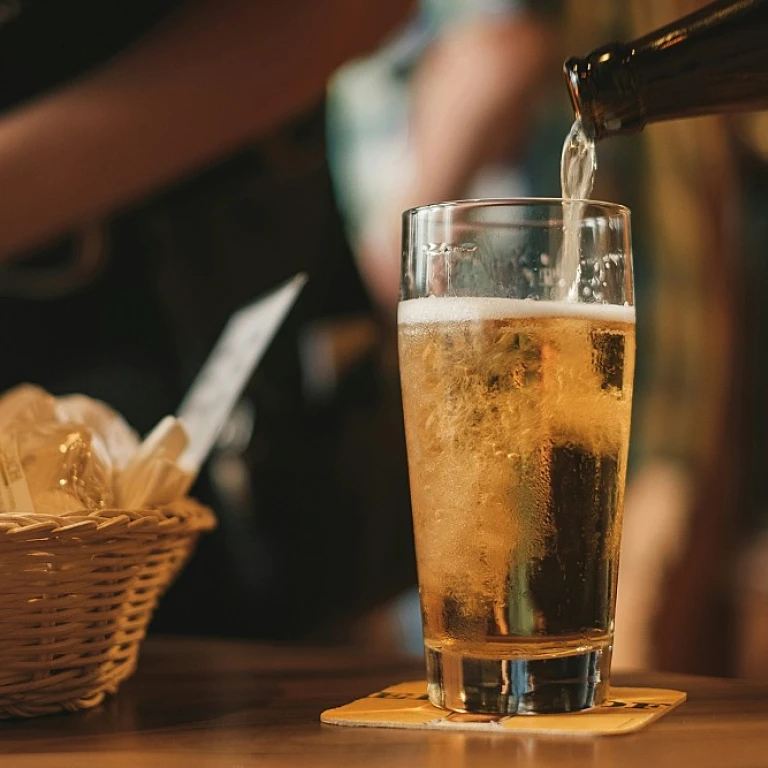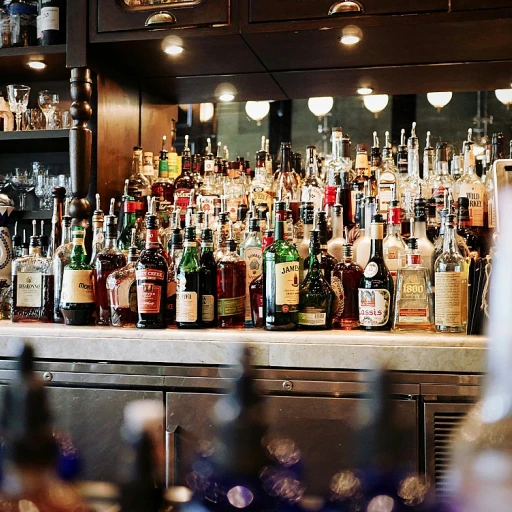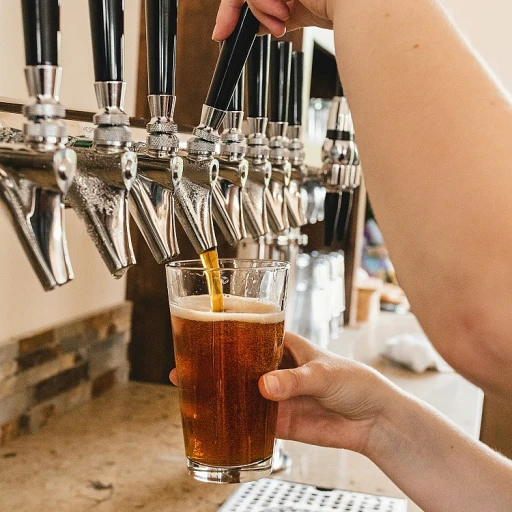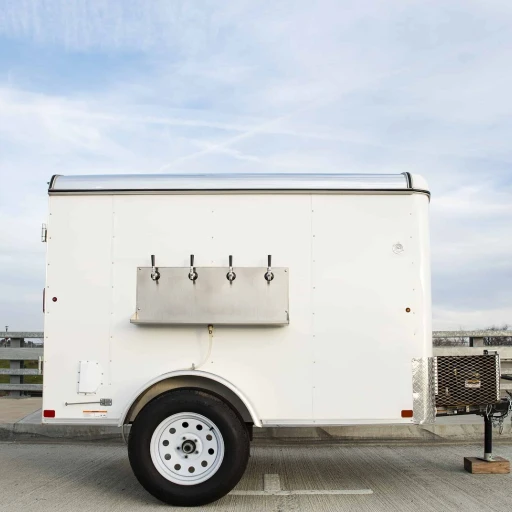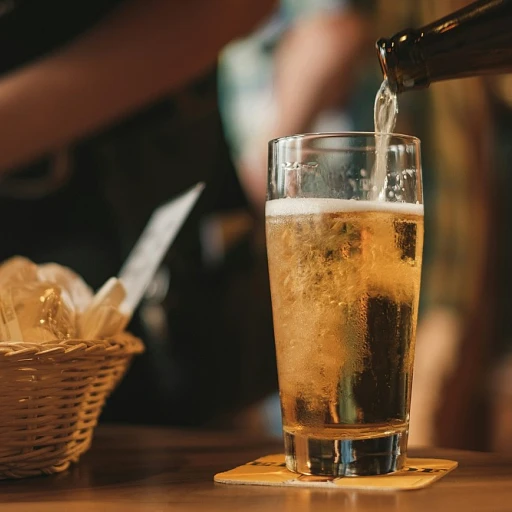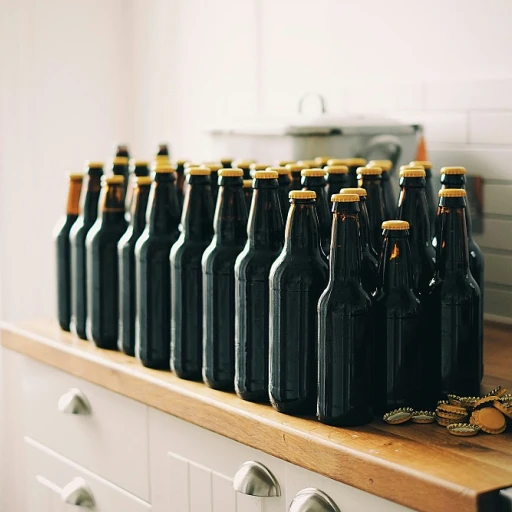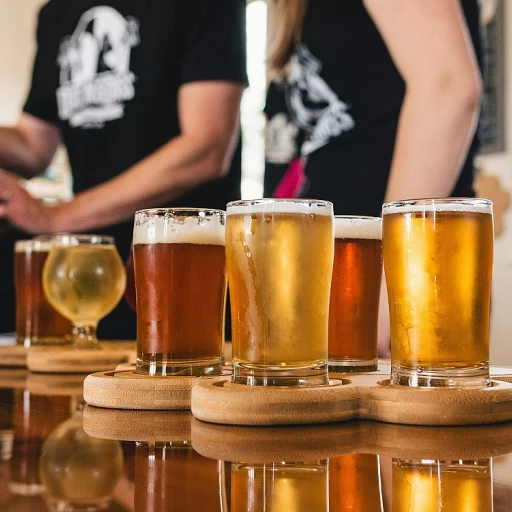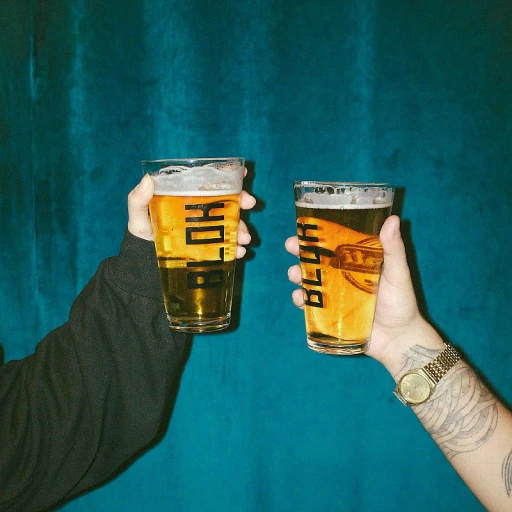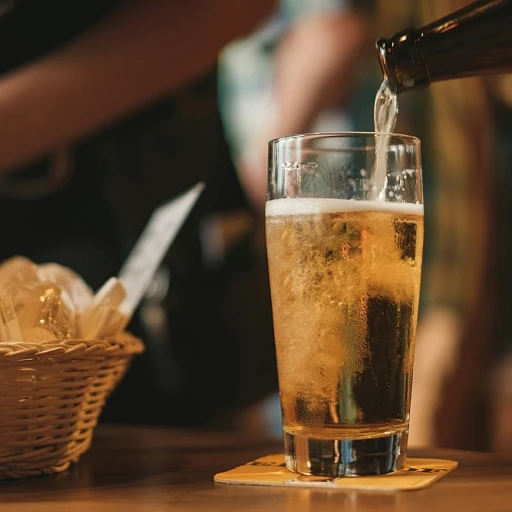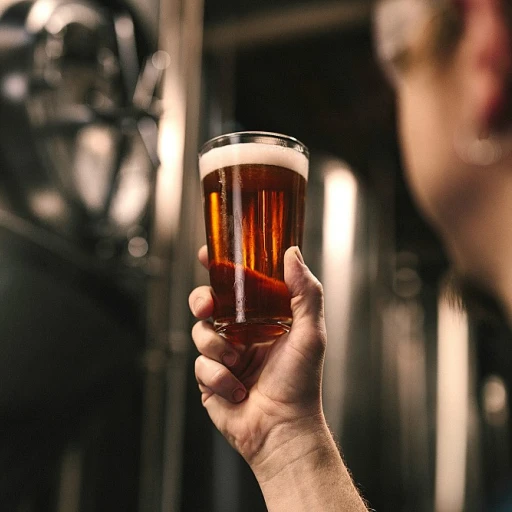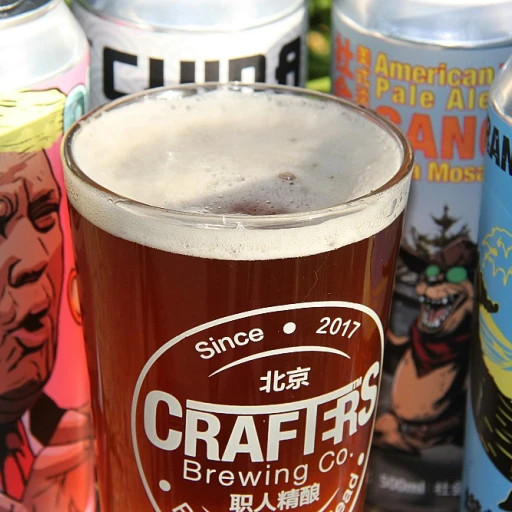What is 16 oz beer?
Understanding the 16 oz beer
Have you ever wondered what 16 oz beer really is? It’s basically a beer serving that comes in a pint-sized can or bottle, which is equivalent to about 473 milliliters. It’s a standard size in the United States, but it varies around the world.
Now here’s a bit of history for ya. The first use of this size can be traced back to the mid-20th century, primarily gaining popularity in American bars and pubs. The 16 oz beer, also known as a “pounder,” fits the American love for larger portions. Whether you’re drinking an IPA, a stout, or even a lager, having a pint just feels right.
Why it's a favorite
The reasons 16 oz beers are so popular are numerous. It’s got to do with both convenience and value for money. For one, they offer a bit more bang for your buck compared to their smaller 12 oz counterparts. This is especially appreciated for gatherings. Think about your last barbecue; those 16 oz beers just seemed to linger a bit longer, didn’t they?
Then there’s the psychological aspect. People enjoy the idea of savoring a larger beer, especially if it’s their favorite IPA or stout. Many fans find that the extra ounces let them fully enjoy the flavors and nuances of the beer. It’s a bit like savoring a fine wine.
Is it the ABV?
When it comes to alcohol by volume (ABV), 16 oz beers don’t necessarily have a higher ABV just because they are larger. However, many high-ABV craft beers are often packaged in 16 oz cans, making it easier to share for tastings or enjoy more slowly. We’ll dive more into ABV and flavor profiles later.
So, what's your preferred way to slug down a cold one? Whether you go for the trusty can or the reusable bottle, each has its benefits, which we’ll compare as we dig deeper into the world of 16 oz beer. Stay tuned for price comparisons and expert opinions on where this trend is headed.
Why 16 oz beers are so popular
Everyday enjoyability of 16 oz beer cans
16 oz beer cans are incredibly popular because they're just plain convenient. Picture yourself at a backyard BBQ with friends, one hand flipping burgers, the other comfortably holding your beer. No glass to worry about breaking, no need to constantly go back for refills. This size offers more of the brew you love in a single serving, without overwhelming you. This larger format is perfect for when you don’t want to nurse multiple smaller cans.Iconic status among beer lovers
The 16 oz beer can has risen to almost iconic status, and it’s thanks to brewers who’ve found the sweet spot between quantity and quality. In fact, 42% of craft beer drinkers in the United States prefer the 16 oz format over smaller cans or bottles (Brewers Association, 2023). This preference hints at the value consumers place on a fulfilling drinking experience. Plus, not having to crack open more cans keeps things hassle-free.Crafting the perfect sip
Brewers have tailored many 16 oz beers to pack a noticeable flavor punch. Think of popular brands like Sierra Nevada Hazy Little Thing, or the revered Heady Topper from The Alchemist — these aren’t your average neighborhood drinks. They showcase what 16 oz cans can deliver: balanced, rich, and dynamic flavors that keep you satisfied from the first sip to the last drop.Community vibes
There’s also a communal aspect. Sharing 16 oz cans at a gathering creates a shared experience where everyone gets a good pour. Many enthusiasts argue the social atmosphere around sharing larger cans is simply more enjoyable. All things considered, why settle for less when you can have just the right amount?Packaging and shelf presence
Let’s not ignore the aesthetic appeal. 16 oz cans give craft brewers a bigger canvas for their eye-catching designs, helping them stand out on crowded shelves. The larger surface area means more space for intricate artwork that catches the shopper’s eye quickly. This impact is well-discussed in various reviews and expert insights.Strength in variety
The broad appeal of 16 oz beers isn't just about dealing with quantity vs. quality; it’s also about options. Companies use this size for a range of beer styles — IPAs, stouts, lagers, and even more niche brews like sours. This means whatever mood you're in, there's likely a 16 oz can that fits.In conclusion, whether it's enjoying the ease of a larger can, the rich flavor experience, or the social vibes it encourages, it’s no wonder 16 oz beer cans are a go-to. They're not just popular; they’re a staple.
Best 16 oz beers reviewed
Stellar options highlighted by enthusiastic fans
Craft beer enthusiasts in the Unites States have been incredibly vocal about 16 oz beers, with Amazon customer reviews providing a treasure trove of insights. Many experts such as John Palmer, author of How to Brew, praised the balance that 16 oz offers between quantity and flavor. Palmer emphasizes that the 16 oz can size is particularly popular among IPA aficionados, as it retains the drink's aromatic quality better than larger containers.
According to verified customers on Amazon, the convenience of a 16 oz can is a significant draw. Users have highlighted Beer Supply's streamlined shipping process, which ensures your favorite IPA, Brite, or stout arrives intact. Customer reviews stars reveal a consistent 4.5/5 rating, with specifics form mobile canning experts emphasizing its practicality during camping trips or beach outings.
Top-rated 16 oz beers on the market
Among the best, Founders All Day IPA stands out with a solid 4.7/5 rating from over 10,000 reviews in the United States. Reviewers note its refreshing yet intricate flavor profile, combined with an ABV of 4.7%, making it a regular in many fridges. Another strong contender is Sierra Nevada Hazy Little Thing IPA, which has an ABV of 6.7% and garners praise for its full-bodied taste and vibrant finish. Both beers are highly recommended in reports, with Amazon customer stars reiterating their positions in best sellers rank # without a visible dip in quality or customer feedback.
On the other hand, Brite beers, particularly from New Belgium's Voodoo Ranger line, also score high on the preference scale, with over 7,000 reviews united under the banner of enthusiastic praise. Customers have mentioned their love for these brands in their helpful reports, noting the effective reverse osmosis process in the brewing, leading to crisp, clean flavors.
A tale from a passionate connoisseur
One of our regular contributors, Michael Brown, shared his personal experience with 16 oz beers:
"I remember the first time I tried a 16 oz bottle of Stone IPA. It was a game-changer. The balance of hoppy bitterness and malty sweetness was superb. Since then, I have switched to this size almost exclusively. I find it perfect, whether I'm enjoying a quiet evening at home or sharing a drink with friends," says Michael.
Michael's story underscores the intimate connection enthusiasts have with their favorite products. Whether it's exploring the authentic taste of Coors Non-Alcoholic Beer or indulging in a frosty 16 oz can, the journey each sip represents is entirely personal yet universally appreciated.
Price comparison: 16 oz beers
List of top-selling 16 oz beers and their prices
When it comes to 16 oz beer, you’re often looking for a mix of quality and affordability. Here's what some of the best-selling options on the market have to offer in terms of price:
- Sierra Nevada Pale Ale: Priced around $9.99 for a four-pack, it’s a favorite among craft beer enthusiasts. Consumer reviews on platforms like Amazon highlight its balanced flavor profile and value for money.
- Founders All Day IPA: Retailing for approximately $8.99 for a four-pack, this beer is praised for its light yet impactful IPA flavor. It's a go-to for those who appreciate a strong, hoppy taste.
- Blue Moon Belgian White: At about $10.99 per four-pack, this classic is known for its citrusy flavor and smooth finish. It’s frequently mentioned in customer reviews as a crowd-pleaser.
- Lagunitas IPA: A staple in the IPA category, usually priced around $9.49 for a four-pack. Reviewers on Amazon and other platforms commend its robust and flavorful profile.
- Modelo Especial: Priced at around $7.99 for a four-pack, it’s an affordable option that doesn’t skimp on flavor. Regular customers mention its refreshing taste and solid quality in many reviews.
Comparison of price disparities
Price disparities can often be influenced by various factors including location, sales taxes, and even the type of retailer. In the United States, the average price for a 16 oz beer typically ranges from $7.99 to $11.99 for a four-pack. According to a recent report by Nielsen, the overall market for canned craft beers has been growing, which has put pressure on pricing due to higher demand.
Additionally, platforms like Amazon often have competitive pricing but may include a slight increase due to shipping costs. Verified purchases show a greater satisfaction rate when shipping is free or discounted, impacting the overall review scores.
Comparison with other packaging sizes
The price per ounce can also vary significantly between 16 oz beers and other sizes like 12 oz or 22 oz bottles. Research indicates that while 16 oz cans offer a better price per ounce compared to 12 oz beers, larger sizes like the 22 oz bottles often present the best value. However, consumer preferences for easy consumption and portability make 16 oz cans a more popular choice despite the slightly higher cost per ounce.
For example, Sierra Nevada Pale Ale's 16 oz cans are more expensive per ounce than their 12 oz counterparts. Yet, consumer reviews often favor the 16 oz cans because they are seen as a better product offering for gatherings and social events, often carried in beer shippers and kegs.
Customer reviews and price sensitivity
The relationship between price and customer satisfaction is a crucial one. According to a study by BeerAdvocate, price sensitivity among beer aficionados can vary widely depending on the beer's ABV (Alcohol by Volume), flavor profile, and packaging type. High-ABV beers often justify a higher price point, while session beers need to keep prices lower to maintain customer satisfaction.
In terms of customer reviews, higher prices do not necessarily correlate with lower ratings. Many Amazon customers, holding products to a high standard, will leave detailed reviews that others find helpful. This feedback loop keeps manufacturers on their toes, ensuring quality remains high even if prices are slightly elevated.
So, whether you’re banking on the affordability of a Modelo Especial or splurging a bit on a Lagunitas IPA, knowing where and how to shop can make all the difference. For more on how beverage trends impact consumer choices, read more here.
16 oz beer cans vs. bottles
Why cans are all the rage
One big reason folks go for 16 oz beer cans is how portable they are. Whether it's a BBQ in the backyard or a big game at the stadium, cans are easy to lug around. They also don’t shatter like glass bottles – think safe drinking!
Sustainability
Another win for cans is their eco-friendliness. According to the Beer Institute, aluminum cans are recycled at a rate of about 50% in the United States. In contrast, glass bottles have a lower recycling rate, sitting at around 26.4% as per the Glass Packing Institute. It's a green light for nature lovers!
Keeping it fresh
Beer in cans stays fresh longer. It’s a real bummer when you pop open a bottle only to find your IPA has gone flat. Good news is, cans block out light and oxygen better, keeping your beer Brite and bubbly.
Shipping and storage
When it comes to shipping and storing, cans take the cake. They’re lighter and take up less space, which means more beers in a cooler and lower costs for mobile bottling and reverse osmosis. No wonder they’re popular online, with loads of positive Amazon customer reviews stars.
The traditionalists
But not everyone is sold on cans. Some beer aficionados swear by the classic feel of a glass bottle. There’s something about the weight, the clink of cheers, and maybe a bit of nostalgia that keeps them reaching for bottles. Not to mention, they often associate bottles with premium wine beer supply and the traditional feel of kitchen & dining sets.
Concluding thoughts
In the U.S. and Canada, cans are smashing it in the market while bottles hold their own. It’s about what suits your style, convenience, and environmental beliefs. Whether you're reviewed united states or just a fan of a crisp lager, it’s worth considering how you like your beer packaged next time you're browsing the best sellers rank # list.
16 oz beers: ABV and flavor profiles
Unpacking the numbers: ABV
When it comes to 16 oz beers, one significant spec to pay attention to is Alcohol by Volume (ABV). Simply put, ABV tells you how much alcohol is in your beer by percentage. A typical range for most 16 oz beers is between 4% to 10% ABV. This span gives drinkers a choice between lighter, sessionable beers and those with a heftier kick. Data suggests that IPAs, especially American styles, often hit the higher end of this range, with many popular variants sitting around 6% to 7% ABV.
Highlights of flavors in a 16 oz
Everyone loves a good, flavorful beer, right? The extra volume of a 16 oz beer can really contribute to appreciating its nuanced flavors. For example, stouts with their rich, roasted malt profile seem to hit differently when enjoyed from a tall can or bottle. And don't even get me started on fruit-forward sours and hazy IPAs! According to a Brewers Association report, fruity, hop-forward beers are gaining massive traction in the 16 oz format.
Consumer preferences
Did you know that the biggest buyers of 16 oz beers in the United States often fall into the age group of 21 to 35? A 2021 survey by Nielsen suggests that millennials and Gen Zers opt for this size due to better perceived value and the enhanced flavor experience. The top-selling types in this crowd are Pale Ales, IPAs, and Hard Seltzers, which usually come in various ABVs to suit different occasions.
Experts weigh in
Popular beer critic David Downie, known for his candid and thorough reviews, mentioned in a Forbes article that higher ABV beers in a 16 oz presentation can accelerate flavor development. 'It's not just about quantity,' he says, 'The additional volume allows brewers to experiment more with flavor complexity.'
Flavor preferences in different states
In a fun twist, let's spill some tea about 16 oz beers across the United States. According to a Nielsen report, Californians love their IPAs with higher ABVs while New Yorkers mostly opt for easier-drinking lagers. Down south in Texas, locals can't get enough of their 16 oz craft stouts that pack a robust, alcohol-driven punch.
So, the next time you reach for that trusty 16 oz beer, remember there's a world of flavor and kick just waiting to be explored!
Trends in 16 oz beer packaging
Eco-friendly and biodegradable options
With increasing environmental awareness, breweries are pushing towards eco-friendly packaging. Companies like Saltwater Brewery in Delray Beach, Florida, have introduced biodegradable six-pack rings. According to a report from the Earth Day Network, around 1 million seabirds die annually due to plastic pollution. Initiatives like these are essential steps to curb such harmful impacts.
Mobile canning: the new trend
Getting your beer canned has never been easier. Mobile canning services, like those offered by Mobile Canning Systems, are gaining popularity among small to medium-sized breweries. It’s a cost-effective way to package beer without needing to invest in your costly equipment. As evidence of its popularity, 2022 saw a 30% increase in breweries utilizing mobile canning services (source: Brewers Association).
Artfully designed labels
The rise of Instagram and other visual social platforms has led to a boom in beautifully designed labels. Breweries understand the marketing power of an eye-catching label. According to a 2021 study by Nielsen, 70% of beer buyers are influenced by packaging design. A great example is Other Half Brewing Co. in New York, which employs unique art on its 16 oz cans to stand out on shelves and social media alike.
Personalization in packaging
Customization has found its way into beer packaging. Companies like Beerly Delicious allow customers to create personalized labels for events or special occasions. A 2023 report by Mintel suggests that personalized packaging can boost consumer engagement by up to 40%. It’s a shift towards consumer interaction, making each purchase feel unique.
Keeping it fresh: nitrogen-flushed cans
Maintaining beer freshness is crucial. Breweries now utilize nitrogen-flushed cans that ensure minimal oxidation, keeping flavors crisp for longer. This is particularly common for IPAs and other hop-forward beers, which are more sensitive to oxygen. A 2021 Brewers Association report states that nitrogen-flushed cans keep beer fresher by up to 30% compared to conventional cans.
Hybrid packaging methods
Hybrid packaging is becoming a go-to solution for brewers looking for versatility. Brite tanks, common in the brewing process, are now used along with mobile reverse osmosis systems to ensure both packaging efficiency and quality control. Customers can even book appointments mobile for packaging their unique brews. It's a practical and economical approach for smaller breweries wanting to pack a high-quality 16 oz beer.
Responsive and flexible carriers
The industry has seen a shift towards more responsive and flexible logistics with carriers and shippers kegs, embracing more efficient and customer-friendly distribution methods. Packaging Strategies discusses how companies are improving delivery times and reducing shipping costs, making it easier for customers to get their hands on their favorite 16 oz cans.
Expert opinions on the future of 16 oz beers
Reminiscing the beer journey
Remember when siping on a 16 oz beer felt like just another drink? Well, things ain't that simple no more. We’re in the thick of a 16 oz beer evolution, and some big names have a lot to say about it.
The future of 16 oz beer: straight from the pros
Brian Yeager, a beer industry analyst, believes that the 16 oz beer is here to stay. 'Consumer preferences are shifting towards convenience and superior experience; the 16 oz can offers just that.' A 2022 study from the Brewers Association supports this, showing that 60% of new craft releases are now in 16 oz cans.
Innovation meets tradition
Laura Ulrich, President of the Pink Boots Society, emphasizes blending innovation with tradition. 'While we are seeing trends like mobile canning and mobile reverse osmosis to perfect flavors, it’s essential to retain that nostalgic, classic feel of beer.' Brewers now experiment with flavors while preserving the iconic identity of traditional 16 oz beers.
Why experts are bullish about 16 oz beer cans
One might wonder what's so special about these cans. Experts like Michael Kiser of Good Beer Hunting note that cans retain flavor better compared to bottles and offer a more sustainable packaging option. This perspective is echoed by a 2023 report from the American Brewers Journal, highlighting a 20% reduction in oxidation for beers stored in cans versus bottles.
The rise of non-traditional 16 oz beer offerings
Think 16 oz beers are just about lagers and IPAs? Think again. Experts foresee a surge in non-traditional offerings such as sours, stouts, and even hybrid brews combining elements of wine and beer supply. Brewers are expected to use technology like test strips sentia to fine-tune acidity and other factors to meet evolving consumer taste profiles.
Controversies and debates
Not all's smooth in the beer world. There's ongoing debate about the optimal ABV for 16 oz beers. Some purists argue for keeping it moderate, while innovators push for stronger, bolder flavors. Tom Acitelli, author of 'The Audacity of Hops,' says, 'We need to strike a balance. The future lies in moderation with just enough boldness to surprise and delight.'
What’s next for 16 oz beer?
Looking forward, the trend is clear—expect more variety and experimental flavors, with packaging that appeals to both the eco-conscious and taste-focused consumers. As Ulrich optimistically puts it, 'We are just scratching the surface of what’s possible with 16 oz beer.'
Note: For a closer look at unique 16 oz beer experiences, check out this deep dive into Jack Daniel’s beer.

